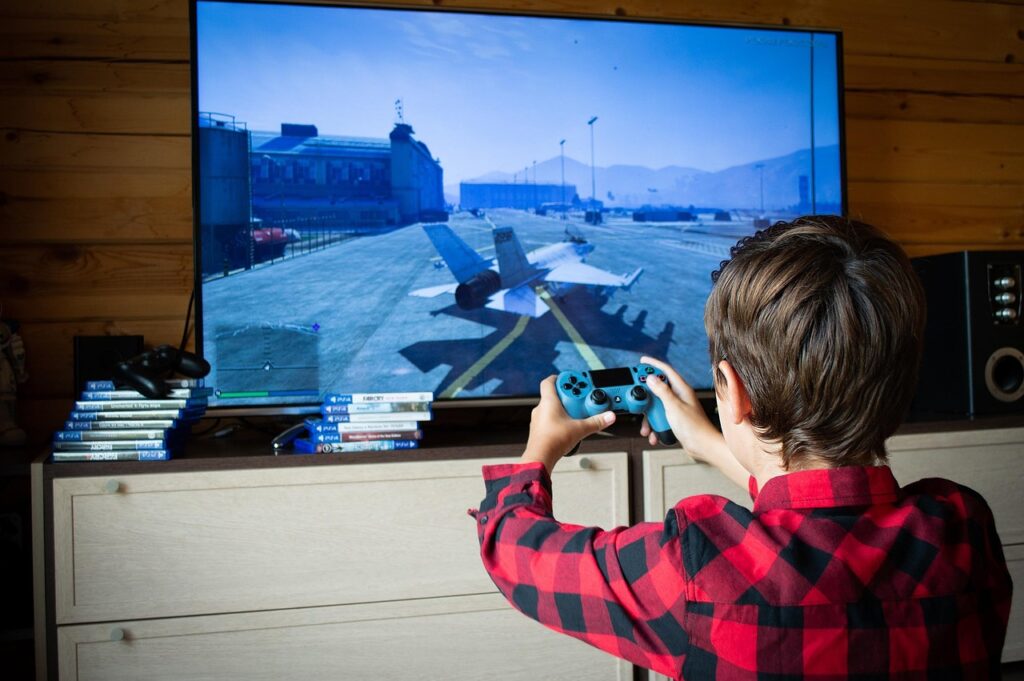
In today’s digital age, screens have become an integral part of our daily lives. From smartphones and tablets to computers and televisions, screens are everywhere. While technology offers numerous benefits, excessive screen time can pose challenges, particularly for families trying to maintain a healthy balance between virtual and real-world interactions. This article aims to explore effective strategies for balancing screen time within a family setting, ensuring that technology enhances rather than disrupts family life.
Understanding Screen Time
Before setting guidelines, it’s essential to understand what screen time entails. Screen time refers to the amount of time spent using devices with screens, such as televisions, computers, and mobile devices. It can be categorized into various types:
Educational Screen Time
This includes time spent on screens for learning purposes, whether through educational apps, online classes, or research.
Recreational Screen Time
This type encompasses activities like gaming, watching videos, or social media browsing for entertainment.
Passive vs. Active Screen Time
Passive screen time involves consuming content without interaction, such as watching TV. Active screen time includes engaging activities like interactive learning apps or video calls with friends and family.
The Challenges of Excessive Screen Time
Excessive screen time can lead to various physical, mental, and social issues. Understanding these challenges can help families recognize the need for balanced screen time.
Physical Health Concerns
Prolonged screen time can contribute to sedentary behavior, leading to health issues such as obesity, poor posture, and eye strain. Encouraging regular breaks and physical activity is crucial to counter these effects.
Mental Health Implications
Excessive screen time, particularly on social media, has been linked to anxiety, depression, and reduced attention spans. It’s essential for families to monitor emotional well-being and promote offline activities that support mental health.
Impact on Social Skills
Spending too much time on screens can hinder the development of interpersonal skills, especially in children and teenagers. Face-to-face interactions are vital for building empathy, communication skills, and emotional intelligence.
Setting Family Screen Time Guidelines
Establishing clear guidelines is crucial for maintaining a healthy balance of screen time in the family. Here are some strategies to consider:
Create a Family Media Plan
Develop a media plan that outlines when and how screens can be used. This plan should consider the needs and schedules of all family members, allowing for flexibility while maintaining structure.
Lead by Example
Parents play a critical role in setting the tone for screen usage. Demonstrating healthy screen habits, such as limiting phone use during family meals, encourages children to follow suit.
Designate Screen-Free Zones and Times
Identify areas in the home where screens are not allowed, such as bedrooms and dining areas. Additionally, establish screen-free times, such as during meals or an hour before bedtime, to encourage family interaction and relaxation.
Encourage Alternative Activities
Promote activities that do not involve screens, such as outdoor play, reading, arts and crafts, or family game nights. These alternatives help foster creativity, physical health, and family bonding.
Screen Time Recommendations by Age
Different age groups require tailored screen time guidelines. Here are some general recommendations based on age:
Infants (0-18 months)
For infants, screen time should be avoided, except for video chatting with family members. Instead, focus on real-world interactions, such as talking, playing, and reading together.
Toddlers (18-24 months)
For toddlers, introduce high-quality, educational screen content. Limit screen time to 30 minutes a day, and co-view whenever possible to facilitate learning and interaction.
Preschoolers (2-5 years)
Preschoolers should have no more than one hour of screen time per day, focusing on educational content. Encourage co-viewing and discussions about what they watch to enhance understanding and engagement.
School-Aged Children (6-12 years)
For school-aged children, balance screen time with physical activities, homework, and family interactions. Establish a daily screen time limit that aligns with the family’s media plan and encourage tech-free family activities.
Teenagers (13-18 years)
Teenagers can have more autonomy in managing their screen time but should be encouraged to prioritize responsibilities and offline social interactions. Open communication about screen usage and its impact on well-being is crucial.
Using Technology Positively
While it’s important to manage screen time, technology can also be a positive force in family life when used wisely.
Educational Tools
Leverage educational apps and online resources to support learning and skill development. Encourage children to explore subjects of interest through technology.
Family Bonding
Use technology to strengthen family bonds. Organize virtual family gatherings, play multiplayer games that foster teamwork, or watch educational documentaries together.
Creativity and Innovation
Encourage creative use of technology, such as digital art, coding, or video production. These activities can inspire innovation and provide valuable skills for the future.
Monitoring and Adjusting Screen Time
Regularly assess the effectiveness of your family’s screen time guidelines and make adjustments as needed. Consider these strategies:
Regular Check-Ins
Hold family meetings to discuss screen usage and any challenges encountered. Encourage open dialogue and involve children in decision-making to promote responsibility.
Use Parental Controls
Utilize parental control features on devices to monitor and limit screen time. These tools can help enforce guidelines and provide peace of mind.
Adapt to Changing Needs
As children grow and technology evolves, be prepared to adapt your guidelines. Stay informed about new digital trends and adjust your family’s media plan accordingly.
Conclusion
Balancing screen time within a family requires thoughtful planning, open communication, and a commitment to fostering healthy relationships with technology. By setting clear guidelines, promoting alternative activities, and using technology positively, families can enjoy the benefits of the digital world while maintaining strong connections in the real world. Ultimately, the goal is to create an environment where screens enhance, rather than hinder, family life.
#ChatGPT assisted in the creation of this article.






